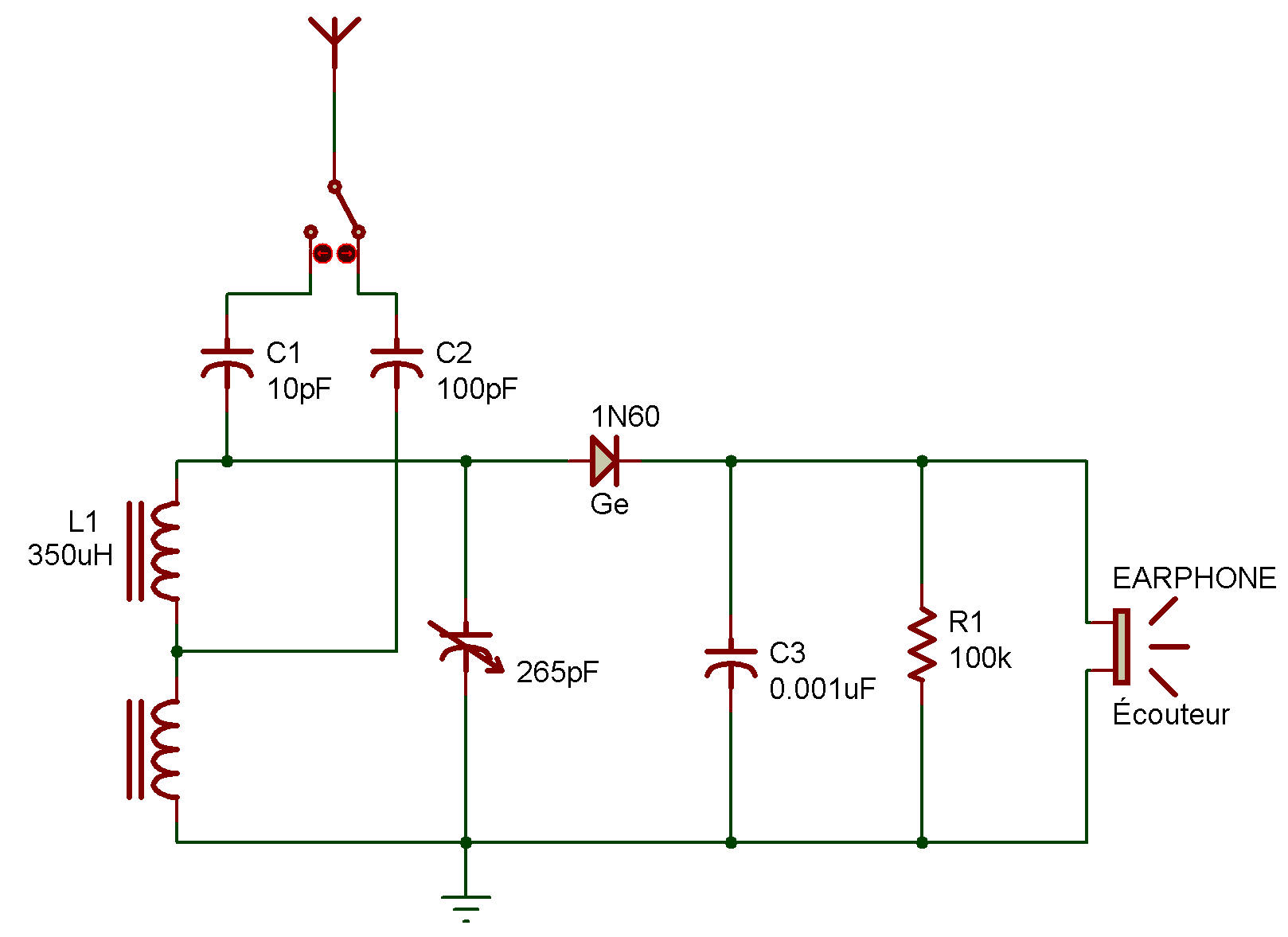
Crystal Set Radio (Simple-Diode Radio)
See also Barre d'antenne AM

No kit of projects would be complete without a crystal radio circuit. Most everyone in electronics has experimented with this 'oldest of all' radio circuits. Before the days of vacuum tubes or transistors, the crystal set was the only way to receive radio signals. The signals produced by a crystal radio are weak (no amplification) so an earphone is used for sound reproduction.
The Earphone supplied with this kit is a crystal type, and requires very little current for operation. A good Antenna and earth Ground connection are required to receive distant stations.
Local stations can be heard with almost anything used as an antenna. A long piece of wire will probably make an adequate antenna in most cases. Earth ground means just that, you connect the wire to the ground. One easy way to do this is to connect a wire to a metal, cold water pipe. If this is not possible, you will need to drive a metal stake into the ground and connect the wire to that.
Two Antenna connections are provided on this and other radio circuits. They are not meant to be used at the same time. Try each connection and use the one that gives the best reception. Long Antennas (and those that act like one) work best whit 100pF.
Short Antennas (50 ft./15 m or less) work best whit 10pF. The part of the radio circuit made up of the Antenna Coil and the Tuning Capacitor is called the "tank circuit". A tank circuit is the part of any radio that selects the station (frequency) that you will listen to.
Without this 'selectivity' you might hear all the stations mixed together. The Diode "rectifies" the RF signal sent out by the radio transmitter. The result of rectification is the recovery of the audio signal (modulation) which was placed on the RF signal at the transmitter in the form of amplitude variations.
This modulation recovery is called "detection". The 100K Resistor is included in the detection circuit to provide a DC load for the Diode (especially for strong signal) because the Earphone is like an open circuit to the DC component of detection. You can experiment with this circuit in just about any way (except for using batteries or AC current), so have fun!
